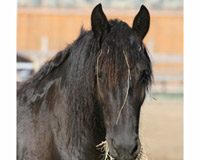Dental care and barn time may seem unrelated, but unexpected tooth pain leads to a scramble to see the dentist. As humans, it’s tempting to equate our horse’s dental needs to our own—but is it that simple?
Tooth Growth
Horses’ teeth start growing early in life.
“A foal’s teeth start to develop in the uterus, and the central incisors are often present at birth or erupt during the first week of life,” says Chris Wickliffe, DVM, an equine veterinarian based in Oregon.
At 2.5, 3.5 and 4.5 years old, primary teeth start falling out and permanent teeth begin coming in, Wickliffe explains. In most horses, all permanent teeth are present by 5 years old, but growth doesn’t stop there.
“Because horse feed is very coarse, they literally grind their teeth off over time,” Wickliffe says.
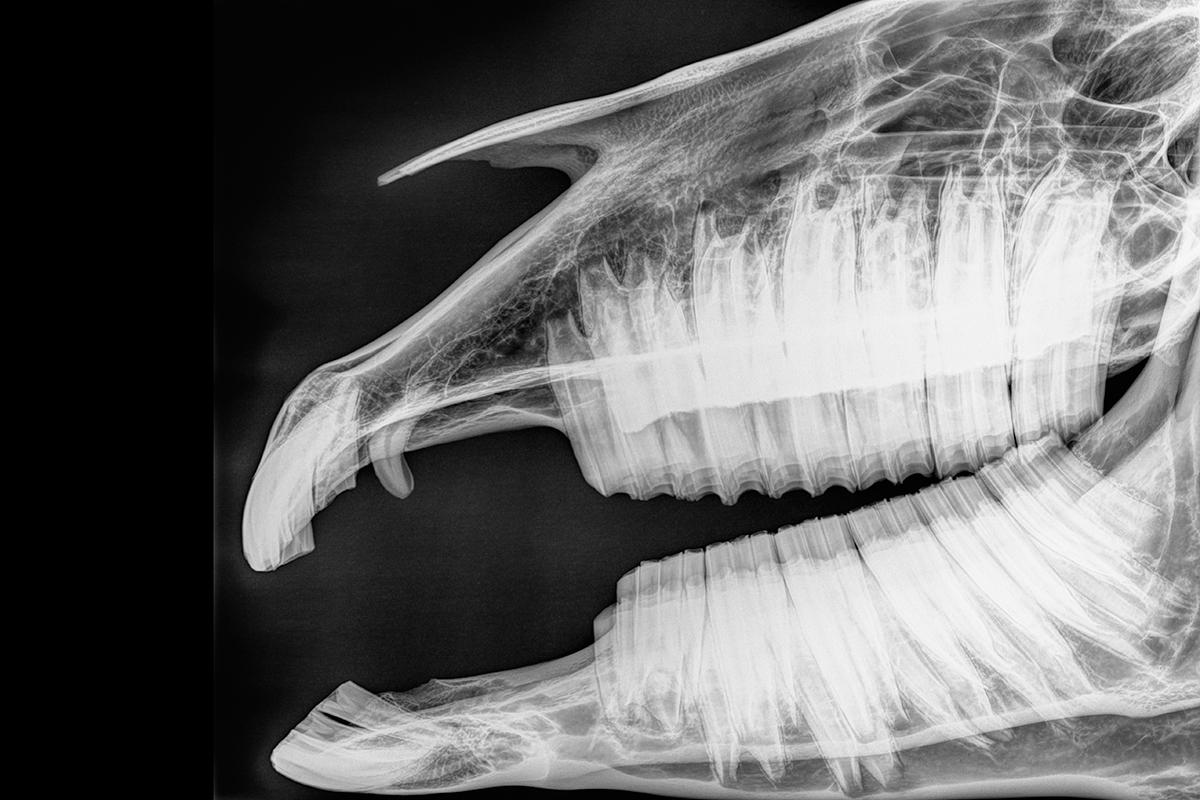
As the tooth gets ground off, it generates a reflex in the periodontal ligament that pushes the tooth into the mouth to replace what was ground off. This process slows as the horse gets older until he runs out of tooth.
During their lifespan, horses will grow 24 primary teeth and up to 44 permanent teeth.
Human teeth, like those of our hooved companions, show up early.
“Within the first six weeks of life, human teeth begin to form,” says human dentist Jarred Hanley, DMD.
Human teeth are programmed to grow and erupt (come through the gums) in a specific order. Hanley says the first primary tooth erupts around 6 months old, while the first permanent tooth doesn’t arrive until close to 6 years of age. This eruption process continues until the third molars show up at around 17 to 21 years of age.
Most humans develop 20 primary teeth and 32 permanent teeth.
Equine Tooth Structure
Horses and humans both grow four different types of teeth: incisors, cuspids (canines), bicuspids (premolars), and molars.
A horse’s tooth root is located at the bottom of the alveolar bone (the bone where the tooth forms) and comes up through the middle of the tooth, stopping before the gum line, according to Wickliffe. Above that is the pulp cavity, a chamber-like area covered by multiple layers of dentin, cementum and enamel.
Horses have hypsodont teeth, found in grazing animals that eat fibrous material. These have high crowns with extra material for all of the wear and tear they experience.
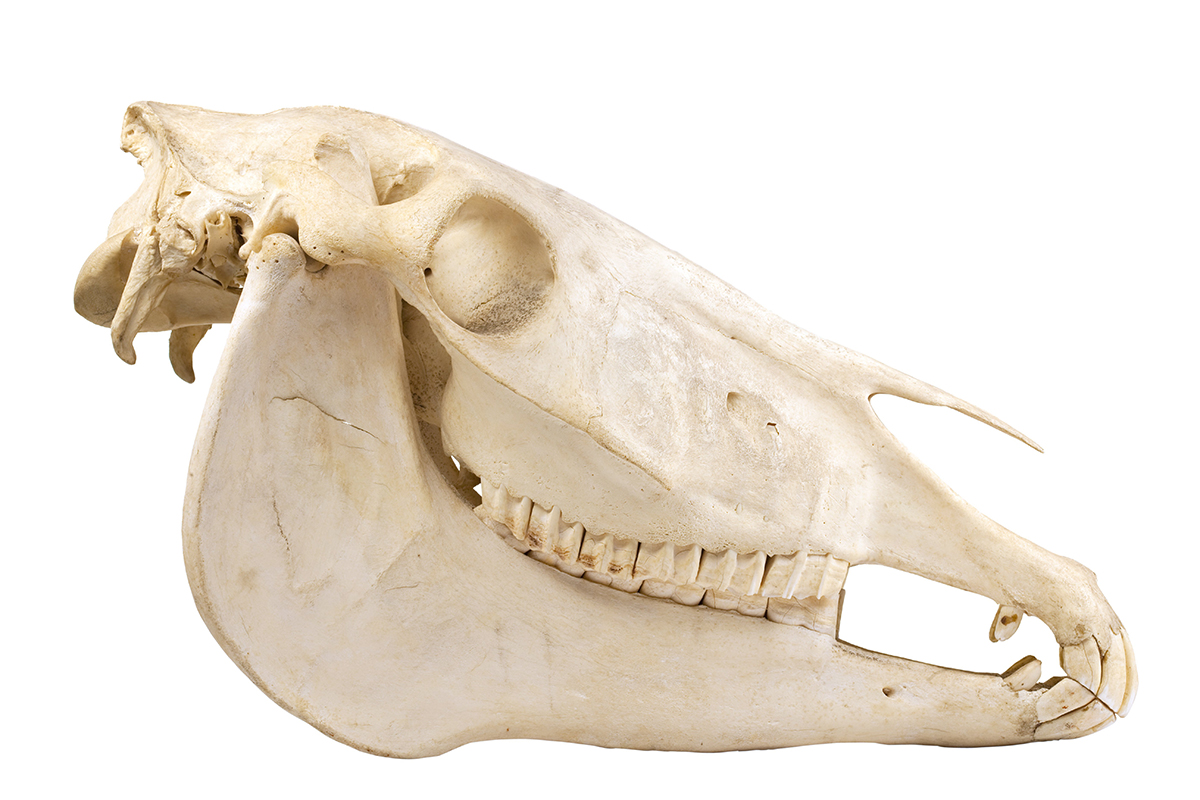
“Most horse’s teeth actually end in cementum around the outside,” Wickliffe says, highlighting an important difference from human teeth. Cementum is softer than enamel and prevents the teeth from shattering under the pressure used to grind food.
Molars are made up of multiple layers of dentin, cementum and enamel. Wickliffe also notes that a horse’s molars and premolars have multiple roots, with most molars having four to five.
Horse incisors, however, have one central root and single layers of cementum, dentin and enamel, similar to human teeth.
Human Tooth Structure
Human teeth are also rooted in the alveolar bone, according to Hanley. In humans, this bone forms our upper and lower jaw. Human teeth have two different components: the crown and the root.
Humans have brachydont teeth, meaning low-crowned teeth that don’t continuously erupt. The crown is the portion of the tooth seen when a person smiles. Human crowns are capped with enamel, the hardest part of the tooth.
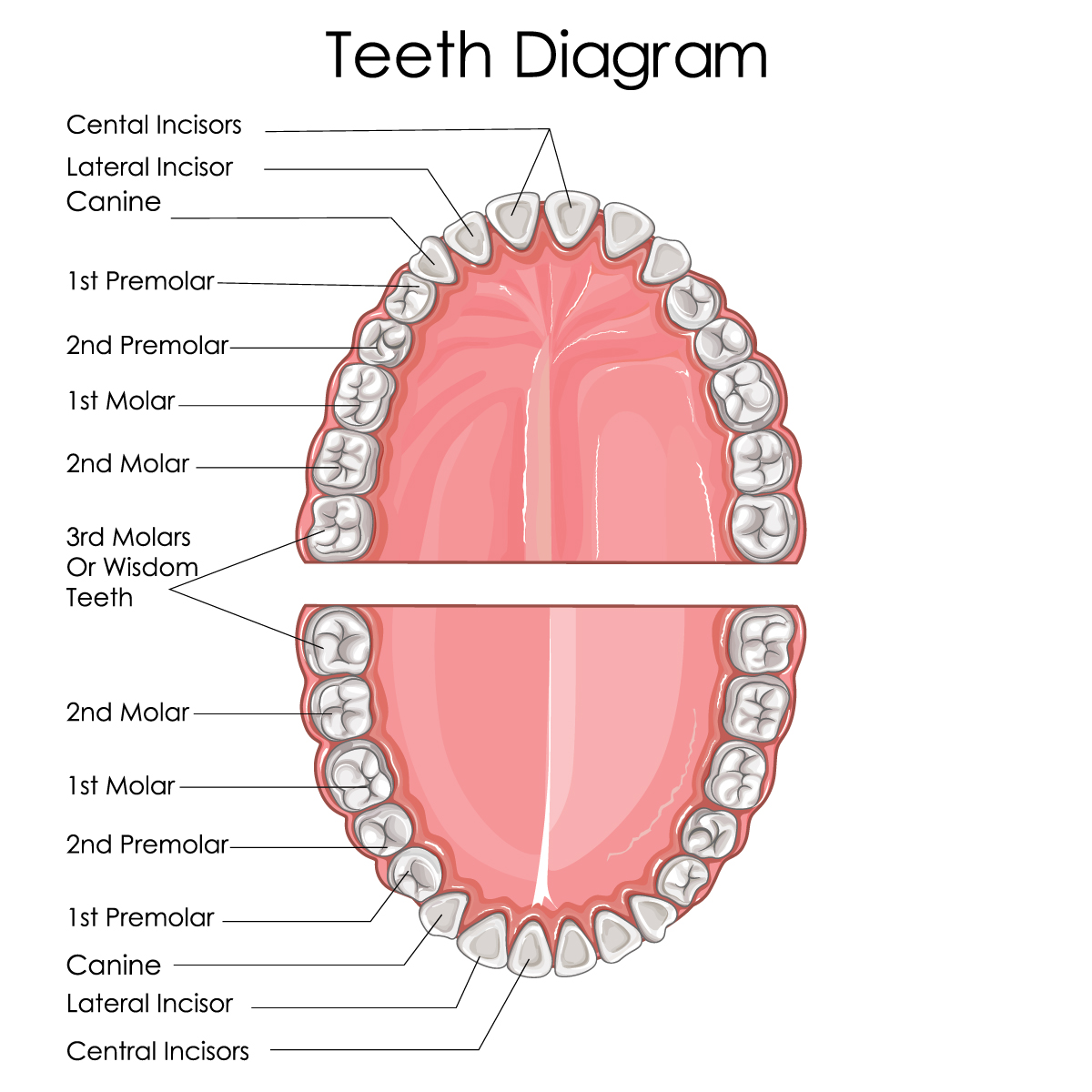
“Enamel provides a hard, durable chewing surface that is resistant to deformation,” says Hanley.
Underneath the enamel is a layer of dentin, which recognizes sensitivity.
Finally, under the dentin lies the vascular core of the tooth where the dental pulp resides. This is where the blood supply, nerve endings and other internal components of the tooth are located.
The second component of human teeth, the root, makes up the lower part of the tooth and is generally below the gums. Cementum covers the outer part of the root, followed by a layer of dentin. The dentin surrounds the inner pulp canal that leads up into the crown of the tooth, according to Hanley.
Equine Dental Care
Horses depend on humans to plan their dental visits. Wickliffe recommends having dental exams accompany annual well-horse visits so your veterinarian can see the full picture of your horse’s health, including the horse’s dental wellbeing.
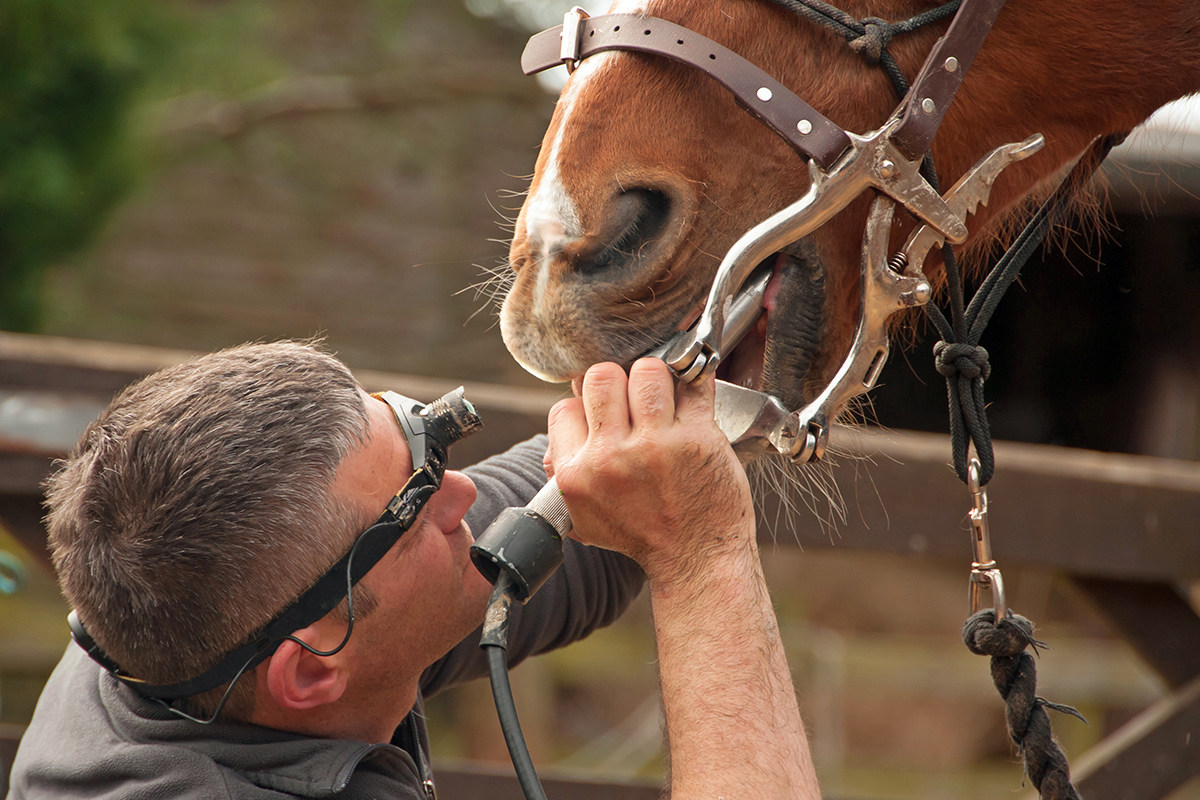
“Teeth lend themselves to a lot of problems throughout the horse,” he adds.
A typical exam includes:
◆ Wellness check
◆ Manual dental exam
◆ Sedation for a more detailed exam (if needed)
◆ Video scope of teeth and mouth (if needed)
During a manual exam, the veterinarian runs their finger along the cheek teeth (premolars and molars) to check for tartar and enamel points. If the horse allows it, a veterinarian may pull the tongue to the side and rinse the mouth for a better view, Wickliffe explains.
If additional examination is needed, sedation may be required so a veterinarian can check for abnormalities in hard-to-see areas, Wickliffe adds. Some practices will use a video scope.
At a minimum, Wickliffe recommends annual horse dental checks.
Human Dental Care
Human teeth require a little more upkeep than our equine partners. At-home care, like brushing, flossing and mouth rinse, in addition to dental visits, is essential, according to Hanley.
A typical office visit includes:
◆ General health history
◆ Oral cancer screening
◆ Examination
◆ X-rays (if needed)
◆ Hygiene cleaning
When looking for cavities, dentists will assess what they can see and touch with instruments, and then will use X-rays to see hidden areas, like the inside of a tooth.
“Any exam is going to be broken up between clinical and radiographic findings,” says Hanley.
Dental checkups should occur at least twice a year, but may require more frequency depending on an individual’s health history, says Hanley. As with horses, providing a complete health history helps a dentist better understand any dental challenges that may arise.
The Bottom Line
Horses and humans have some interesting dental similarities, but they also have key differences. Humans should plan accordingly and schedule preventative visits for themselves and their equine sidekicks. Fewer toothaches mean more time to make happy memories with your horse.
Quick ComparisonsAge Teeth Start Growing: Number of Teeth: Types of Teeth: Annual Dentist Visits for Mature Adults: |
For more equine health content, read Horse Illustrated magazine. Click here to subscribe!




